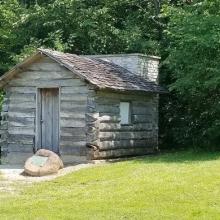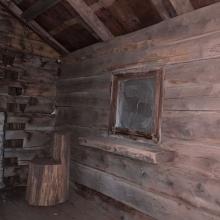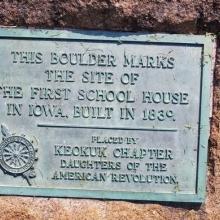The Galland School was the first school in the region now known as Iowa. It was built in 1830, three years before the region was declared open for European settlement and sixteen years before Iowa was granted statehood. The area was reportedly named Ahwipetuck by local indigenous groups, but settlers named their settlement Nashville. This would later be renamed to Galland in honor of one of the first settlers, Dr. Isaac Galland, who played a major part in creating the school. The building was ten feet by twelve feet, made of logs, and was held together primarily with mud due to the scarcity of nails. The first teacher was Berryman Jennings, a twenty-three year-old who taught October to December in 1830. In place of payment, he was given food, firewood, a few home furnishings, and was able to board with Dr. Galland. By 1833, the settlers moved on and the school closed. It briefly served as a home before being cut down into firewood. According to a 1924 Palimpsest article written by Orville F. Grahame, when Keokuk Dam was built in 1913, thus overfilling Lake Cooper, the original site was lost under the water a few hundred feet from the new shore. In 1924 the Keokuk Chapter of the Daughters of the American Revolution placed a memorial boulder near the site and in 1940 a recreation of the building was added.
Photo credits: Photos #1 and #3: originally uploaded to The Historical Marker Database in 2021 by user Cajun Scrambler. Photo #2: originally uploaded to the Historical Marker Database in 2021 by user Mary Helen Scaccia.



